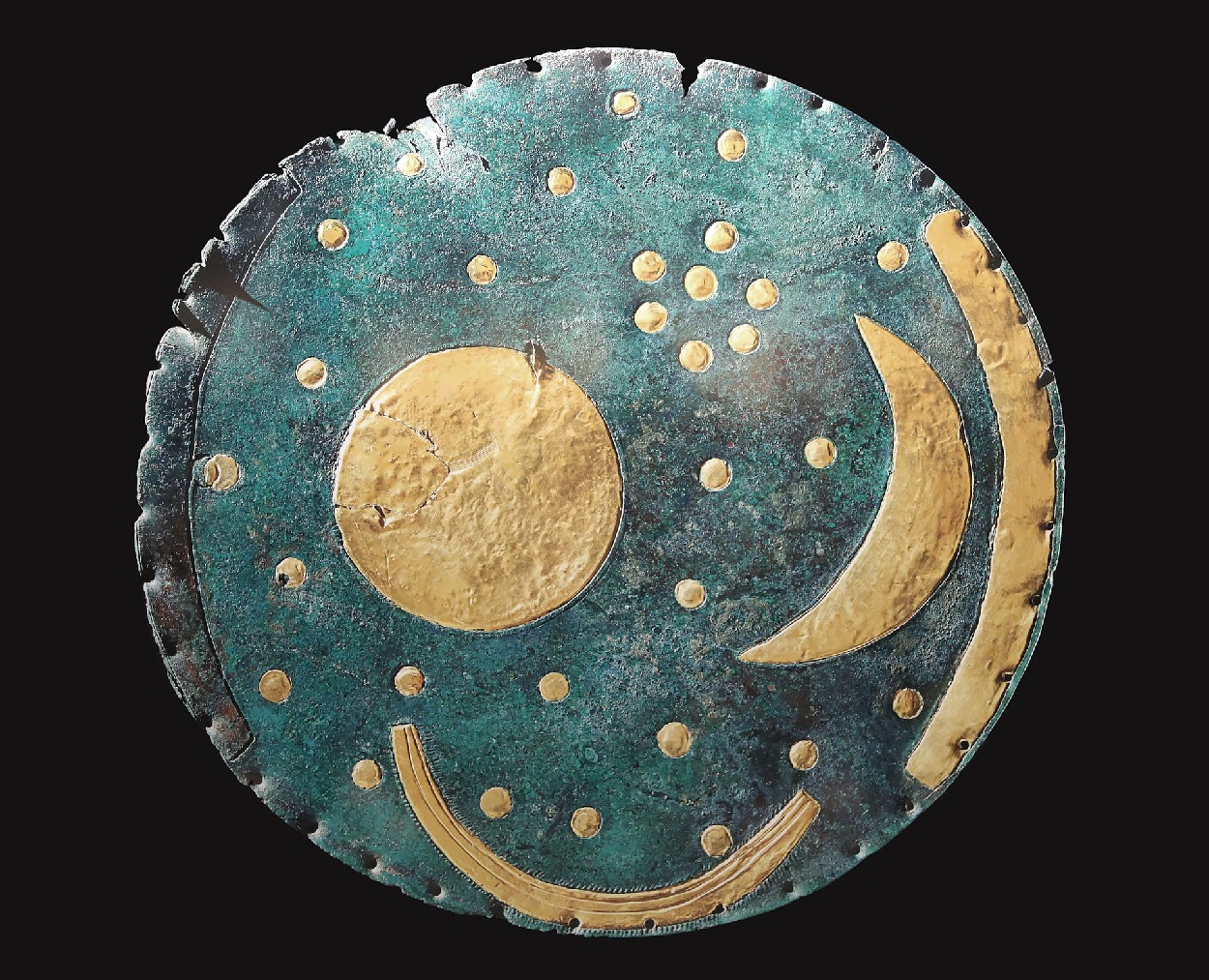A new study, published in the journal Scientific Reports, has revealed new insights into the sophisticated techniques used to craft the Nebra Sky Disk.
The Nebra Sky Disk is a 3,600-year-old artefact first discovered in 1999 on the Mittelberg hill near Nebra in Germany. The discovery was made by Henry Westphal and Mario Renner while they were treasure-hunting illegally with a metal detector.
At the time, the pair found the disc alongside two bronze swords, axes, a chisel, and fragments of spiral armbands, which they sold onto a private dealer. The disc was finally recovered in 2022 during a police-led sting operation, which is now on display in the State Museum of Prehistory in Halle, Saxony-Anhalt, Germany.
The disc features a blue-green patina, adorned with gold inlays representing what is believed to be the oldest known depiction of astronomical phenomena, including the Sun or a full moon, a crescent moon, and star clusters.
Archaeologists have associated the disc with the Únětice culture, which emerged at the start of the Central European Bronze Age around 2300 to 1600 BC.
According to a new metallographic study by the State Office for Heritage Management and Archaeology Saxony-Anhalt, working in collaboration with OVGU and DeltaSigma Analytics GmbH, the disc was crafted through an intricate process that required ten cycles of heating in a forge to 700°C, forging and then annealing to relax the metal structure.
This was determined using energy-dispersive X-ray spectroscopy, electron backscatter diffraction, and microstructural analysis under light microscopy. These studies were accompanied by parallel experimental tests, in which the experienced coppersmith Herbert Bauer, Halle (Saale), made a replica from a cast blank.
“That the investigations continue to produce such fundamental new findings more than 20 years after the Sky Disc was secured not only once again demonstrates the extraordinary character of this find of the century, but also how highly developed the art of metal processing was already in the Early Bronze Age,” says State archaeologist Prof. Dr. Harald Meller.
Header Image Credit :
Sources : idw – https://doi.org/10.1038/s41598-024-80545-5





